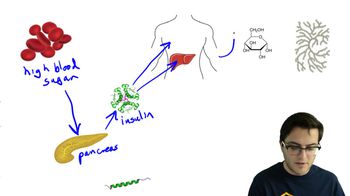Here are the essential concepts you must grasp in order to answer the question correctly.
Red Blood Cell Lifespan
Red blood cells (RBCs) have a lifespan of approximately 120 days in the human body. After this period, they are removed from circulation and must be replaced. Understanding this lifespan is crucial for calculating the rate of RBC production needed to maintain adequate oxygen transport in the body.
Recommended video:
Bone Marrow Function
Bone marrow is the primary site of hematopoiesis, the process of blood cell formation, including red blood cells. It produces new RBCs through cell division, ensuring that the body maintains a sufficient supply to replace those that are lost. This concept is essential for understanding how the body compensates for the continuous turnover of blood cells.
Recommended video:
Cell Division Rate Calculation
To determine how many cell divisions occur each second in the bone marrow, one must calculate the total number of RBCs in the body and the daily replacement rate. Given that an average adult has about 5 liters of blood containing approximately 5 million RBCs per cubic millimeter, this calculation involves understanding volume, concentration, and time to find the necessary production rate.
Recommended video:
Importance of Cell Division
 Verified step by step guidance
Verified step by step guidance Verified video answer for a similar problem:
Verified video answer for a similar problem:



 9:40m
9:40m